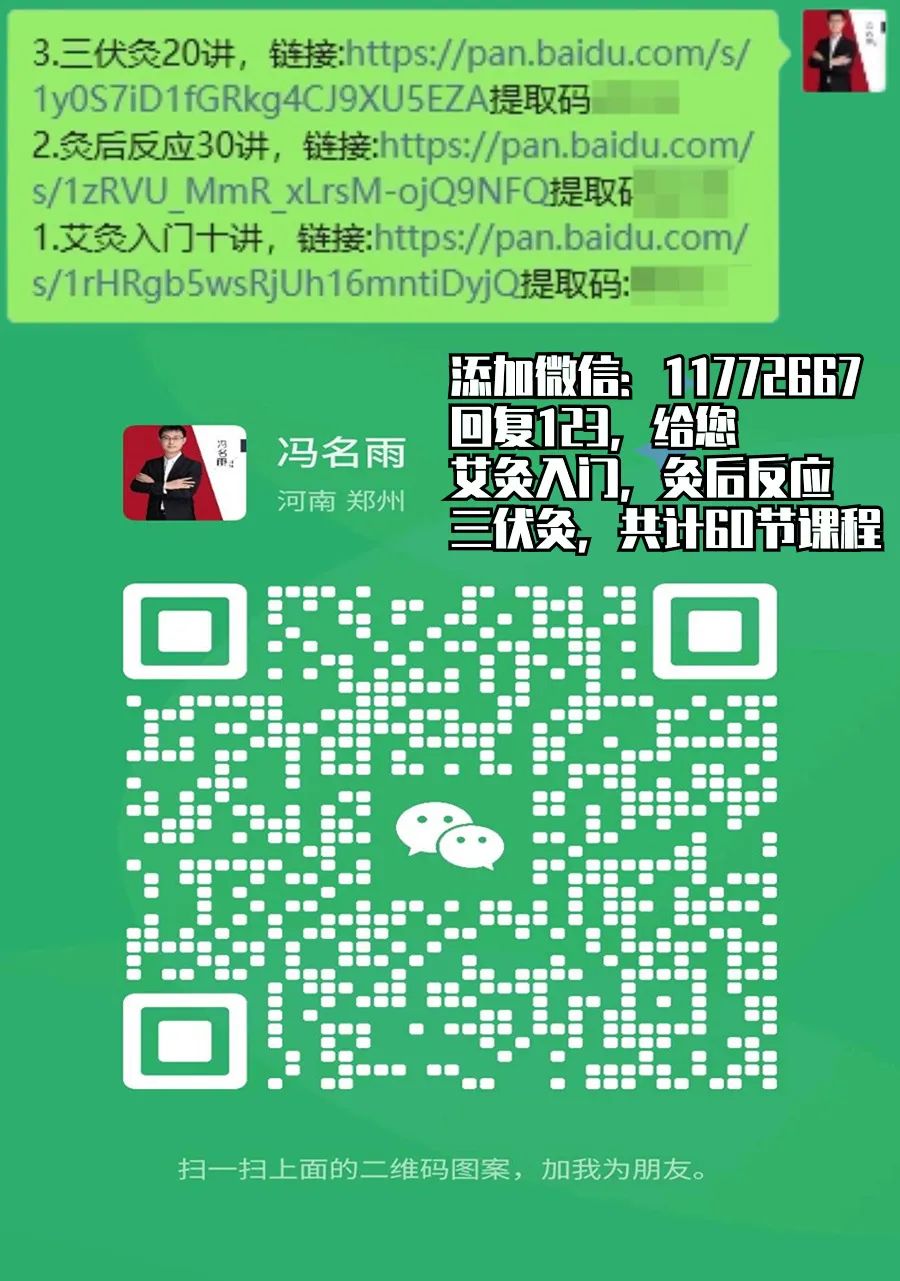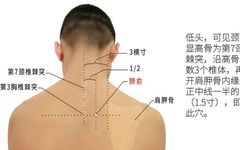↑Click the card above to follow me↑
“
▼
Every night at 9 PM let’s talk about Moxibustion | Goodnight to you

”
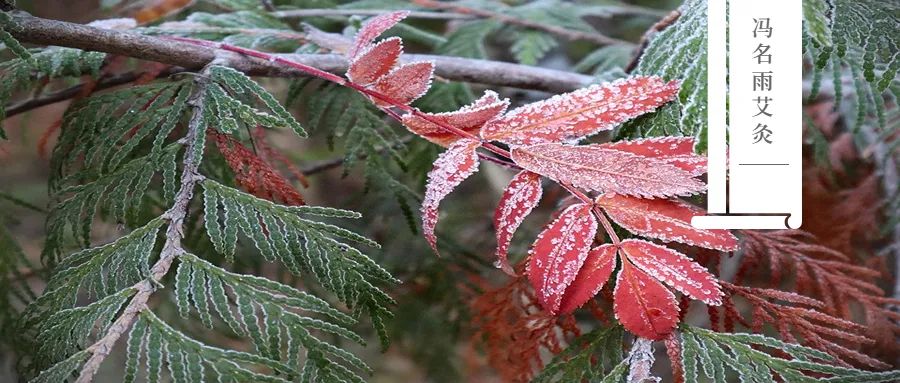
Question from a netizen:
Teacher Feng Mingyu, I don’t cough much during the day, but at night I cough severely, always feeling like I have phlegm that I can’t clear, my throat itches when I breathe in, and I have a lot of phlegm in the morning. What should I do?
Many people are troubled by coughing and phlegm.
Today, let’s talk about what phlegm really is.
Although phlegm can be quite bothersome, from a TCM perspective, phlegm is actually a “mirror” of lung health.
The color of phlegm can indicate different illnesses.
Our goal is not just to stop the cough, but to choose the appropriate acupuncture points based on the color and texture of the phlegm, and also to discuss dietary restrictions:
(Click the image to enter the store)
1. White phlegm indicates cold
White phlegm indicates lung cold, such as constantly having a runny nose and producing white phlegm.
When coughing, there is always a feeling of endless white phlegm in the throat, the nose is congested, and there is a lot of clear nasal discharge, with the tongue coating appearing very moist and slippery.
Recommended: Lung Shu (Feishu) point, located on the back, the back is the yang aspect of the body, containing sufficient yang energy to dispel cold and clear phlegm dampness.
The Lung Shu point is the back shu point of the lungs and is effective for treating coughs; most coughs can rely on it.
As mentioned in the “Suwen: Treatise on Coughing”: “To treat the internal organs, treat the shu points,” moxibustion on the Lung Shu point can help replenish lung qi, open the exterior, dispel cold, warm the body, and stop the cough.
If you have self-heating moxibustion patches at home, be sure to apply them to the Lung Shu point when coughing and phlegm just starts.
If the illness has been prolonged, relying solely on the Lung Shu point may not be sufficient.
「Lung Shu point」: Bend your head and neck, push down 3 vertebrae from the prominent vertebra at the junction of the neck and back, and 2 finger widths laterally from the lower edge.
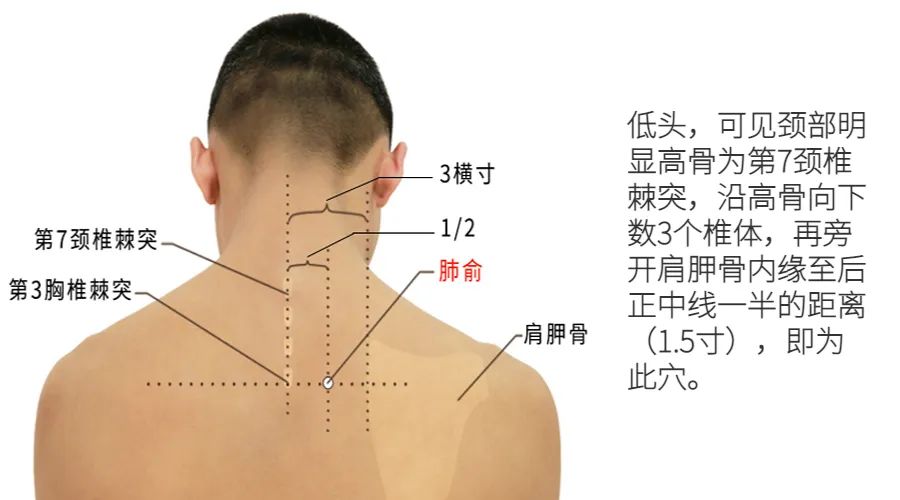
2. Yellow phlegm indicates heat
Yellow phlegm indicates lung heat.
There is phlegm in the throat that cannot be coughed out or swallowed.
Can the Lung Shu point be used at this time? Yes, moxibustion is better than guasha for clearing heat.
Apply blue mugwort essential oil to the Lung Shu point and use a pure copper guasha board to scrape for 3-5 minutes, then perform moxibustion to resolve the phlegm issue!
Yellow phlegm is actually a sign of heat evil invading the lungs or a sign of heat phlegm; to clear lung heat, you can also use: Chi Ze (Shizhe) point.
Chi Ze means: a marsh formed by the gathering of water.
Chi Ze point is a he-sea point in the five transport points of the lung meridian, with a water attribute, and is an excellent choice for clearing lung heat.
Various issues caused by lung heat, such as fever, cough, coughing up blood, yellow phlegm, wheezing, and sore throat, can be treated with moxibustion on the Chi Ze point.
Chi Ze point can clear lung heat and benefit the throat.
Especially in autumn, when the air is dry, the lungs are prone to injury.
Because the lungs are sensitive organs that prefer moisture and are particularly sensitive to dry environments, symptoms of lung heat cough are most likely to occur in autumn.
The most commonly used point is: Chi Ze point.
「Chi Ze point」: Find the radial side of the biceps tendon, in the depression above the elbow crease. (i.e., the side of the elbow tendon closest to the thumb)
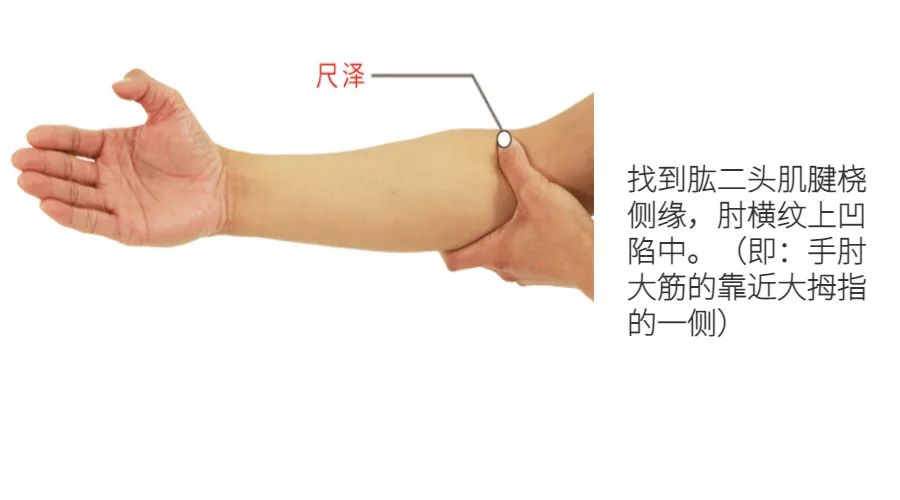
3. Sticky phlegm in the spleen
Having phlegm stuck in the throat and a feeling of heaviness in the chest.
The Feng Long (Fenglong) point can help relieve the chest discomfort.
If there is no cold, and the phlegm is neither yellow nor thick, then it is the source of phlegm.
Phlegm in the spleen indicates dampness; phlegm and dampness are closely related, the more dampness, the more stubborn the phlegm.
There is a saying in the “Yulong Jing” that states, “For excessive phlegm, seek Feng Long.”
At this time, the Feng Long point should be used.
The Feng Long point can eliminate phlegm; it is a connecting point between the stomach meridian and the spleen meridian.
「The spleen governs the transformation and transportation of water and dampness」, so moxibustion on the Feng Long point can regulate spleen and stomach function, promote the smooth flow of qi and blood, and facilitate the expulsion of dampness, achieving the effects of strengthening the spleen, benefiting qi, dispelling dampness, transforming phlegm, and calming cough.
In addition to the Feng Long point, you can also combine it with the Chi Ze point for moxibustion.
「The spleen belongs to earth and governs ascent; the lungs belong to metal and govern descent」, one ascends and the other descends, which can completely eliminate phlegm from the lungs.
For these two points, first moxibustion on the Chi Ze point, then on the Feng Long point, both sides should be treated; you can hold a 1.8 cm moxa stick, moxibustion for about 20-30 minutes each, using warm moxibustion.
Once the phlegm in the lungs is cleared, the skin’s resistance to external evils will improve, and even if the flu strikes in the latter half of the year, there will be no fear.
「Feng Long point」: 8 cun above the tip of the external malleolus, 2 finger widths (middle finger) from the anterior border of the tibia.
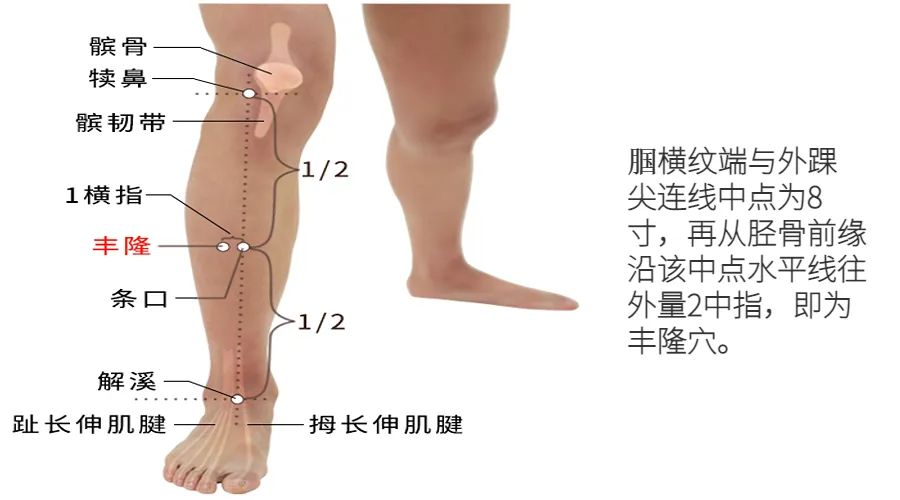
Recommended Products
① Easy to use, enjoy 6 hours of heating moxibustion anytime
② Suitable for the whole body, apply wherever discomfort is felt
③ Click below to enter the store directly
(Click the image to enter the store)
